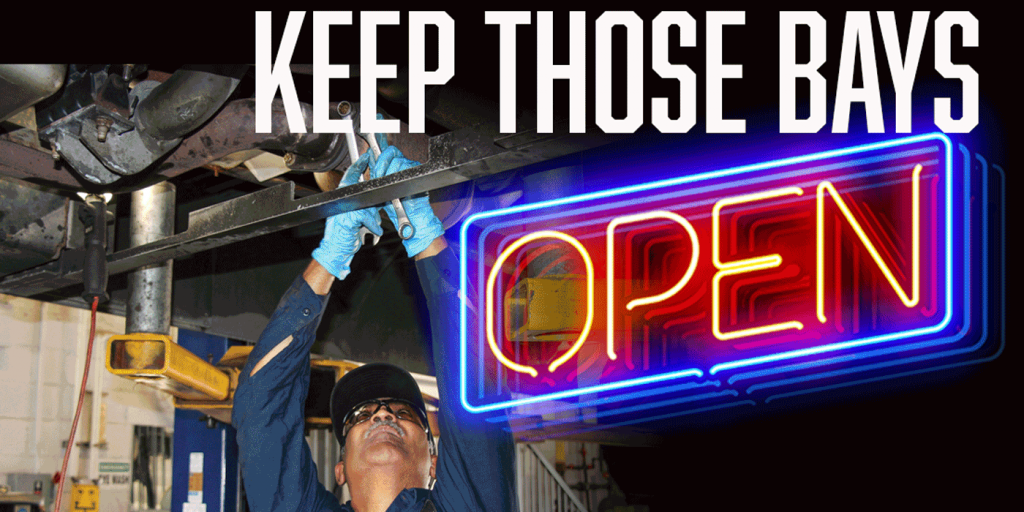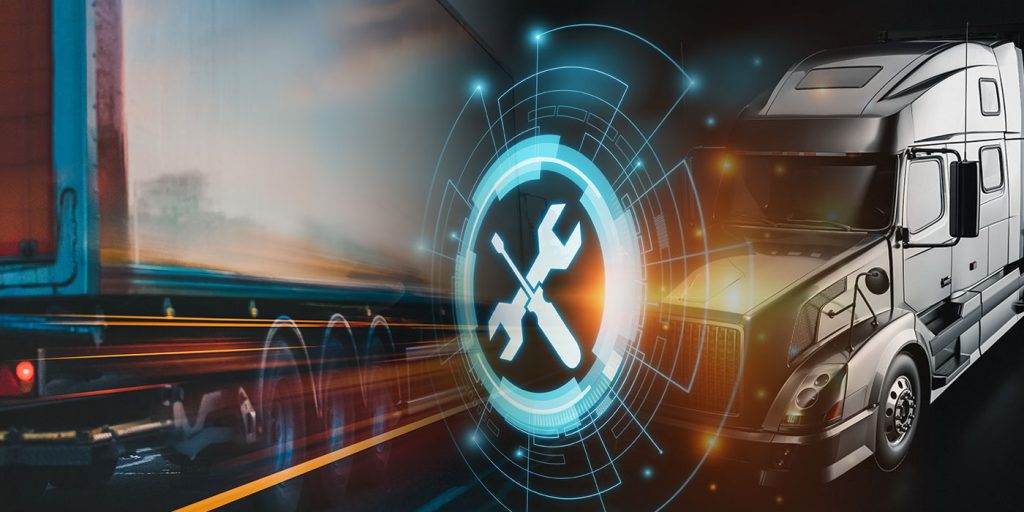Picture this: A fault code is triggered in a truck less than a mile away from your shop. It’s serious. It needs to be fixed right away. The driver locates your shop as the closest, makes a call, and is told to come right over.
The driver arrives only to find that no bays are available—there are some longer repairs ahead of him, and he’ll have to wait until those bays are clear. He waits, growing irritable, knowing that every second he spends in this shop is a second he could be spending running his route, making money and getting home on time.
This is a scenario that’s all too common, and one that fleet service managers need to avoid.
“At Cummins, we studied our service network, and discovered that 40% of wait time is due to technician and service bay availability,” says Noel Hopkins, director of digital and connected product planning at Cummins. “So there’s an enormous amount of improvement we can make to service productivity through improving repair velocity.”
If doing the repair right is job one in a shop, job two is doing it quickly and efficiently—and that means making sure that bays are open, that quick repairs are moving through in a timely manner and that the right resources are allocated for each repair.
So how do you keep bays open, keep customers from waiting and keep trucks moving? It starts with data.
“That data journey starts before the truck arrives, through our connected solutions—the data we can gather from the vehicle while it’s still on the road,” Hopkins notes. “A scheduled maintenance event can typically take half the time of an unscheduled maintenance event, but sometimes that can be exaggerated by parts availability and surges in demand. So gaining upfront data from the vehicle before it enters a service channel is probably the most important thing we can do for the network.”
Of course, it’s not enough to know that you have access to data—it’s about what data you should look at, and what you should learn from it.
“One of the things you can look at right off the bat is the fault signature that’s on the vehicle,” says Lee Lackey, technical sales director with Noregon. “And then go into your service tool, look at the service requirements for that tool and see if there’s anything part-wise or tool-wise that you’re going to need.”
“The truck creates fault codes, and obviously that’s the first point of data that we get,” Hopkins says. “Our connected solutions aggregate the data from that fault code across the whole fleet and provide recommendations of what makes this complete. That means a truck fault code with the recommended steps, which are the most likely to reduce customer downtime and optimize that service event.”
One important aspect of this process is proper reporting and scheduling, so you can match up the shop’s current workflow with the available manpower.
“Having accurate reporting of the mileages/hours/days on your equipment allows an organization to properly schedule equipment in for preventive maintenance,” advises Matt Copot, vice president of maintenance for Transervice Logistics, a leasing and maintenance company. “By doing this, we understand our workflow and can better plan how many bays will be needed and for how long.”
Copot goes on to note that communication with customers is vital to doing this right.
“The customer is at the center of what we do, but if we can better inform them on when we need equipment, it helps the flow of the shop,” he adds. “Scheduling and staffing are critical to our success in keeping the equipment rolling for the customer. When we execute and utilize our resources, we can in turn reduce bay time and increase output.”
Kristy LaPage, business manager for Mitchell 1’s commercial vehicle group, notes that having the proper tools is vital for keeping the bay full while not overpromising.
“For instance,” she says, “Mitchell 1’s labor guide helps by giving a clear understanding of the amount of time a job will take, and the scheduling tool within our Manager SE Tuck Edition shop management software ensures all aspects of the job (special tools, the tech and the bay itself) are available. This gives a clear expectation of when the job will be completed and when the resources will be available for the next vehicle.”
Hear it from the OEMs
We also spoke with a few OEMs on the processes their dealer networks are putting in place to improve bay availability.
“Volvo Trucks’ uptime process starts with our efficient check-in process at the dealership,” says Phillip Swaim, director of network fixed operations for Volvo Trucks North America. “An integrated diagnostics tool helps our service advisors plan shop loading for the day and also performs quick health checks of each truck. If it is determined to be a short job, the service advisor can move it directly to the uptime bay. If it’s going to be a longer job, the customer will know right away that this repair may take longer based on the capacity of the shop.
“Volvo Trucks’ uptime bay concept is simple: it’s all about the short jobs not getting stuck behind the long jobs,” he adds. “Based on our research, most Volvo Trucks dealers’ service mix is 80% short jobs and 20% long jobs. The uptime bay concept gets these short jobs done faster, which creates overall efficiency in the entire shop. It should be noted that Volvo Trucks’ Certified Uptime Dealers have implemented standard processes all driven around bay availability. A third-party study has shown that Volvo Trucks’ certified locations offer 1.75 days faster service than uncertified dealerships.”
Martin Kubiak, manager of service systems for Daimler Trucks North America, says that there are three initiatives that DTNA has undertaken to improve bay availability.
“First, Techlane provides efficiency gains for technician workflow so that the dealer can handle increased capacity in each of its bays,” he says. “Second, Service Tracker decreases the time spent moving trucks waiting for repair approvals by increasing communication between customers and dealers. Third, Express WriteUp creates a repair order to consistently provide laser-focused descriptions enabling improved diagnostics accuracy.”
Mark Reiter, vice president of service with Navistar, notes that the industry’s ongoing technician shortage can put constraints on shops and dealerships, so it’s important to emphasize technician recruitment and training.
“Navistar has had a relationship with the Universal Technical Institute since 2000,” he shares. “We partner on a focused 14-week program dedicated to training on International Truck and IC Bus products. When the students graduate from this program, Navistar works to place graduates into the dealer network. We’ve found that technician recruitment allows for better utilization of existing service bays.”
What’s next
So step one for improving bay availability is having a plan for how to deal with shorter repairs versus longer repairs when they come in—whether that’s through a dedicated bay for shorter jobs or another method. It’s also important to make sure that communication in your shop is top-notch, so that when repairs do come in, they’re dealt with quickly, efficiently and correctly.
Once you have your plan, how do you put it into place? And how do you make sure it stays in place for the long haul?
“I think it comes back to keeping people involved in the process—right down to the individual technicians,” Cummins’ Hopkins answers. “Probably the most important thing we can do for our service channel is help them understand whether they’re being truly effective, which means not just servicing more trucks quickly and efficiently, but doing the right fixes. Correcting the issue right the first time is really important. It may be possible to reset a fault code or to turn off a lamp in the cab, but are we making sure that vehicle gets to its next scheduled maintenance?
“So over the life cycle of a vehicle, making sure you’re thinking about the next 500,000 miles, not just the next 5 miles, and using the data to ensure that every service event is optimized with that mindset in place.”
“It has to be data-driven,” Noregon’s Lackey recommends. “You have to let the techs know this is about measuring the repair process, not measuring the tech.”














